-
 Bitcoin
Bitcoin $107,360.0175
0.36% -
 Ethereum
Ethereum $2,425.2303
-1.15% -
 Tether USDt
Tether USDt $1.0003
-0.01% -
 XRP
XRP $2.1850
4.33% -
 BNB
BNB $646.4128
0.37% -
 Solana
Solana $146.0511
2.89% -
 USDC
USDC $0.9998
-0.01% -
 TRON
TRON $0.2754
1.55% -
 Dogecoin
Dogecoin $0.1626
0.80% -
 Cardano
Cardano $0.5599
0.49% -
 Hyperliquid
Hyperliquid $37.2026
0.62% -
 Bitcoin Cash
Bitcoin Cash $499.0346
0.17% -
 Sui
Sui $2.7251
2.86% -
 Chainlink
Chainlink $13.1187
-0.19% -
 UNUS SED LEO
UNUS SED LEO $9.0747
0.54% -
 Avalanche
Avalanche $17.6526
0.87% -
 Stellar
Stellar $0.2373
1.02% -
 Toncoin
Toncoin $2.8387
0.25% -
 Shiba Inu
Shiba Inu $0.0...01136
1.04% -
 Litecoin
Litecoin $85.2460
1.04% -
 Hedera
Hedera $0.1473
2.04% -
 Monero
Monero $314.3978
1.56% -
 Bitget Token
Bitget Token $4.6799
0.81% -
 Dai
Dai $1.0001
0.02% -
 Polkadot
Polkadot $3.3403
0.70% -
 Ethena USDe
Ethena USDe $1.0002
0.02% -
 Uniswap
Uniswap $6.9908
0.77% -
 Pi
Pi $0.5310
-3.57% -
 Pepe
Pepe $0.0...09292
-0.19% -
 Aave
Aave $254.8721
-2.23%
Is it effective if the gap is not filled for three days?
In crypto trading, gaps often remain unfilled due to volatility, shifting sentiment, or new market developments, challenging the assumption that they always close.
Jun 28, 2025 at 01:00 pm
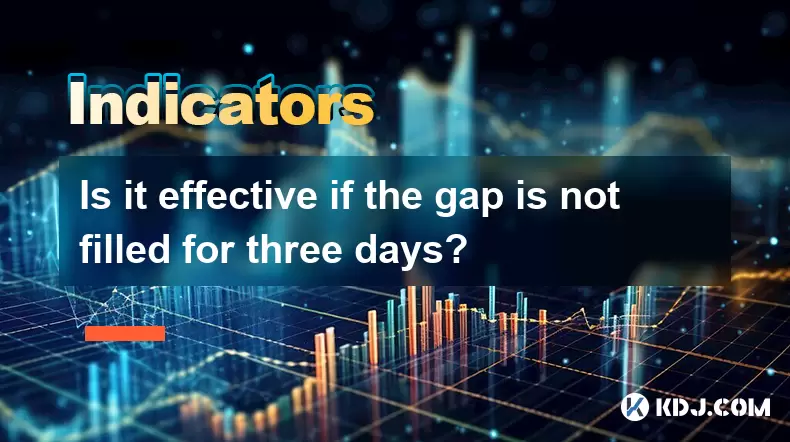
Understanding Gaps in Cryptocurrency Markets
In the context of cryptocurrency trading, a gap refers to a situation where the price of an asset opens significantly higher or lower than its previous closing price, with no trading activity occurring in between. These gaps are commonly observed during periods of high volatility, especially when major news events, regulatory updates, or market sentiment shifts occur outside regular trading hours.
Gaps can be classified into different types: common gaps, breakaway gaps, runaway gaps, and exhaustion gaps. Each type provides traders with potential signals about future price movements. However, not all gaps get filled immediately, leading to questions about their effectiveness as indicators over time.
A gap is considered "filled" when the price returns to the level it had before the gap occurred.
Why Some Gaps Remain Unfilled for Days
The persistence of an unfilled gap over three days or more can raise concerns among traders about whether the technical signal associated with that gap still holds value. In traditional markets, many traders believe that most gaps will eventually fill, but this assumption does not always hold true in the highly volatile crypto space.
Several factors contribute to why a gap may remain unfilled:
- Market Sentiment Shifts: Sudden changes in investor perception due to global economic data or geopolitical developments can prevent prices from returning to pre-gap levels.
- Volume and Liquidity: Low trading volume around the time of the gap can delay or even eliminate the likelihood of a fill.
- New Information: If new information emerges after the gap occurs—such as regulatory changes or macroeconomic announcements—the original context of the gap may become irrelevant.
In some cases, the gap itself becomes a new support or resistance zone rather than being filled.
Evaluating Gap Effectiveness Over Three Days
To assess whether a gap remains effective after three days, traders should consider several elements beyond just the passage of time. The key lies in analyzing how the broader market environment has evolved since the gap formed.
Here’s how to approach such a scenario:
- Review Price Action: Examine how the asset has traded in relation to the gap. Has it approached the gap area multiple times without filling it? This could indicate strong resistance or support at that level.
- Analyze Volume Patterns: A lack of significant volume near the gap suggests weak interest in revisiting that price point, making a fill less likely in the short term.
- Check for News Events: Investigate whether any major announcements have shifted the narrative surrounding the asset, rendering the gap less relevant.
Traders should avoid relying solely on the concept of gap-filling as a guaranteed rule, especially in fast-moving crypto markets.
Practical Steps for Traders Dealing with Unfilled Gaps
If you're actively monitoring a gap that hasn't been filled within three days, here's what you can do:
- Update Your Strategy: Adjust your entry or exit points based on current price behavior instead of clinging to expectations tied to the gap.
- Use Risk Management Tools: Place stop-loss orders or take-profit levels according to updated support and resistance zones.
- Incorporate Other Indicators: Combine gap analysis with tools like moving averages, RSI, or Bollinger Bands to get a clearer picture of market conditions.
It’s crucial to remain flexible and adapt strategies as new data becomes available, rather than rigidly expecting a gap to close.
Historical Examples of Unfilled Gaps in Crypto
Looking at historical data from major cryptocurrencies like Bitcoin (BTC), Ethereum (ETH), and Solana (SOL), there are numerous instances where gaps remained unfilled for extended periods.
For example:
- In early 2021, BTC experienced a significant upward gap following Tesla’s announcement of a $1.5 billion BTC purchase. Despite a pullback, the gap was never fully filled before the next rally began.
- In late 2022, ETH gapped downward amid FTX’s collapse but later resumed a sideways trend without revisiting the gap zone for weeks.
These examples highlight that while gaps can provide useful insights, they are not foolproof predictors of future movement, especially if external conditions change rapidly.
Frequently Asked Questions (FAQ)
Q: What causes gaps to form in cryptocurrency charts?
Gaps in crypto charts typically form due to rapid price movements between trading sessions, often driven by breaking news, sudden shifts in sentiment, or macroeconomic developments that occur outside active trading hours.
Q: Are all gaps destined to be filled eventually?
No, not all gaps are filled. While some traders follow the idea that "gaps always fill," this is not a universal rule, especially in highly volatile assets like cryptocurrencies.
Q: How long should I wait before assuming a gap won’t be filled?
There is no fixed timeframe. Some gaps fill within minutes, while others may remain open for months. It’s better to monitor ongoing market conditions rather than set arbitrary timelines.
Q: Can unfilled gaps act as support or resistance levels?
Yes, unfilled gaps can serve as psychological or actual support/resistance zones. Traders often observe these areas closely for potential reversals or breakouts.
Disclaimer:info@kdj.com
The information provided is not trading advice. kdj.com does not assume any responsibility for any investments made based on the information provided in this article. Cryptocurrencies are highly volatile and it is highly recommended that you invest with caution after thorough research!
If you believe that the content used on this website infringes your copyright, please contact us immediately (info@kdj.com) and we will delete it promptly.
- Across Crypto Project Faces Heat: Secret $23M Transfer Sparks Governance Debate
- 2025-06-28 16:30:13
- Trump Coin's Wild Ride: Liquidity Drain, Exchange Deposits, and What It Means for Binance & OKX
- 2025-06-28 16:50:13
- Trump, Memecoin Mania, and Whale Watching: A New York Minute in Crypto
- 2025-06-28 16:30:13
- Shiba Inu, Lending Coins, and Early Holders: A New Frontier
- 2025-06-28 16:51:59
- Meme Coins in July 2025: Investing in the Future of Hype?
- 2025-06-28 16:51:59
- SUI's Trending Surge: Decoding the Reasons Behind the Hype
- 2025-06-28 16:55:12
Related knowledge
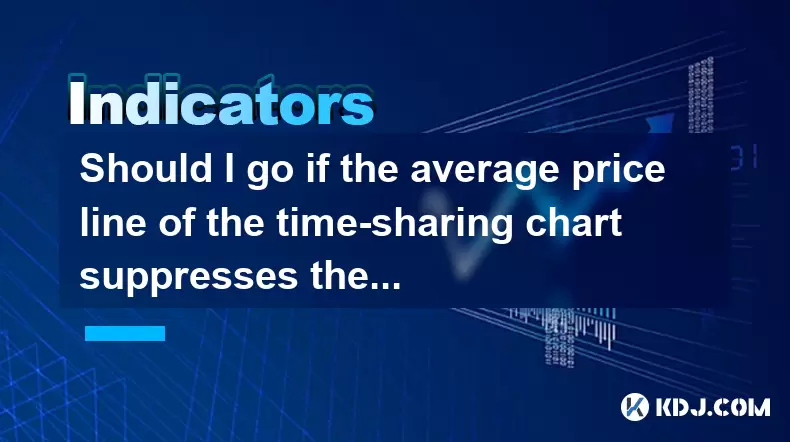
Should I go if the average price line of the time-sharing chart suppresses the rebound?
Jun 28,2025 at 05:14pm
Understanding the Time-Sharing Chart and Average Price LineThe time-sharing chart is a real-time chart used in cryptocurrency trading to visualize price movements over short intervals, typically within a single trading day. It provides traders with insights into intraday volatility and momentum. The average price line, often calculated as a moving avera...
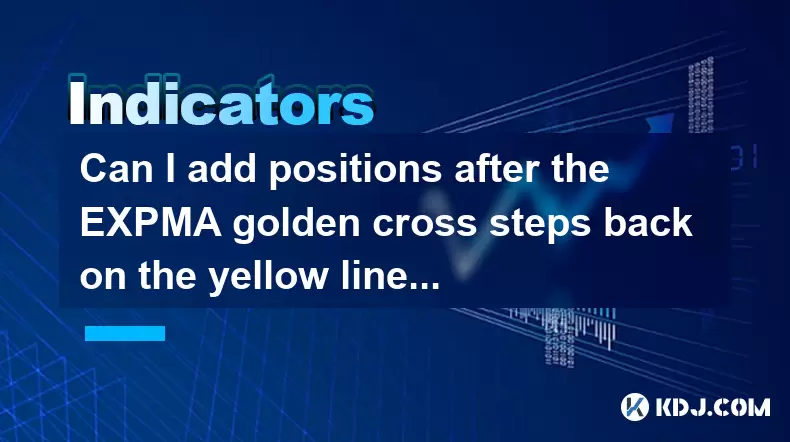
Can I add positions after the EXPMA golden cross steps back on the yellow line?
Jun 28,2025 at 11:57am
Understanding the EXPMA Indicator and Its RelevanceThe EXPMA (Exponential Moving Average) is a technical analysis tool used by traders to identify trends and potential entry or exit points in financial markets, including cryptocurrency trading. Unlike simple moving averages, EXPMA gives more weight to recent price data, making it more responsive to new ...

How to operate the next day after the daily limit is released with huge volume?
Jun 28,2025 at 12:35pm
Understanding the Daily Limit and Its ReleaseIn cryptocurrency trading, daily limits are often set by exchanges to manage volatility or during periods of high market activity. These limits can restrict how much an asset's price can fluctuate within a 24-hour period. When the daily limit is released, it typically means that the price cap has been lifted,...
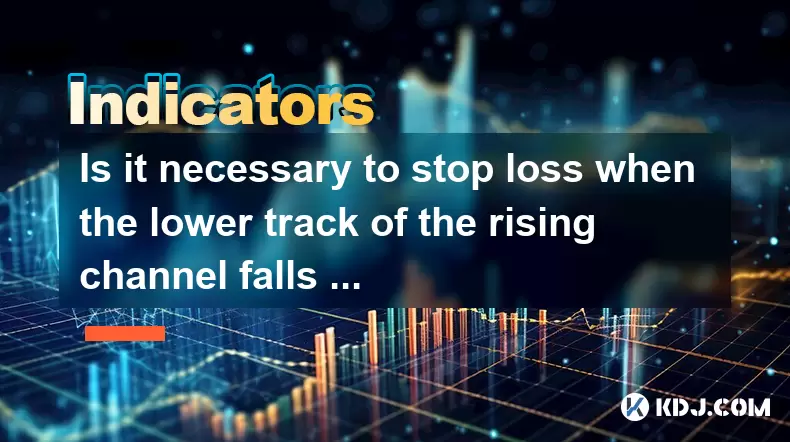
Is it necessary to stop loss when the lower track of the rising channel falls below?
Jun 28,2025 at 05:29pm
Understanding the Rising Channel PatternThe rising channel pattern is a popular technical analysis tool used by traders to identify potential upward trends in asset prices. It consists of two parallel lines: an upper resistance line and a lower support line, both sloping upwards. The price action typically oscillates between these boundaries, offering o...
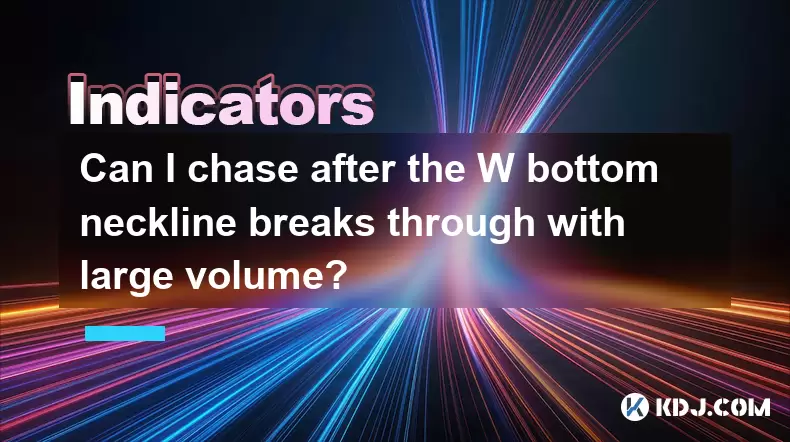
Can I chase after the W bottom neckline breaks through with large volume?
Jun 28,2025 at 07:28am
Understanding the W Bottom Pattern in Cryptocurrency TradingThe W bottom pattern is a common technical analysis formation used by traders to identify potential bullish reversals. In cryptocurrency markets, this pattern typically appears after a downtrend and signals that the selling pressure may be diminishing. The structure of the W bottom includes two...

Is it effective if the gap is not filled for three days?
Jun 28,2025 at 01:00pm
Understanding Gaps in Cryptocurrency MarketsIn the context of cryptocurrency trading, a gap refers to a situation where the price of an asset opens significantly higher or lower than its previous closing price, with no trading activity occurring in between. These gaps are commonly observed during periods of high volatility, especially when major news ev...

Should I go if the average price line of the time-sharing chart suppresses the rebound?
Jun 28,2025 at 05:14pm
Understanding the Time-Sharing Chart and Average Price LineThe time-sharing chart is a real-time chart used in cryptocurrency trading to visualize price movements over short intervals, typically within a single trading day. It provides traders with insights into intraday volatility and momentum. The average price line, often calculated as a moving avera...

Can I add positions after the EXPMA golden cross steps back on the yellow line?
Jun 28,2025 at 11:57am
Understanding the EXPMA Indicator and Its RelevanceThe EXPMA (Exponential Moving Average) is a technical analysis tool used by traders to identify trends and potential entry or exit points in financial markets, including cryptocurrency trading. Unlike simple moving averages, EXPMA gives more weight to recent price data, making it more responsive to new ...

How to operate the next day after the daily limit is released with huge volume?
Jun 28,2025 at 12:35pm
Understanding the Daily Limit and Its ReleaseIn cryptocurrency trading, daily limits are often set by exchanges to manage volatility or during periods of high market activity. These limits can restrict how much an asset's price can fluctuate within a 24-hour period. When the daily limit is released, it typically means that the price cap has been lifted,...

Is it necessary to stop loss when the lower track of the rising channel falls below?
Jun 28,2025 at 05:29pm
Understanding the Rising Channel PatternThe rising channel pattern is a popular technical analysis tool used by traders to identify potential upward trends in asset prices. It consists of two parallel lines: an upper resistance line and a lower support line, both sloping upwards. The price action typically oscillates between these boundaries, offering o...

Can I chase after the W bottom neckline breaks through with large volume?
Jun 28,2025 at 07:28am
Understanding the W Bottom Pattern in Cryptocurrency TradingThe W bottom pattern is a common technical analysis formation used by traders to identify potential bullish reversals. In cryptocurrency markets, this pattern typically appears after a downtrend and signals that the selling pressure may be diminishing. The structure of the W bottom includes two...

Is it effective if the gap is not filled for three days?
Jun 28,2025 at 01:00pm
Understanding Gaps in Cryptocurrency MarketsIn the context of cryptocurrency trading, a gap refers to a situation where the price of an asset opens significantly higher or lower than its previous closing price, with no trading activity occurring in between. These gaps are commonly observed during periods of high volatility, especially when major news ev...
See all articles
























































































